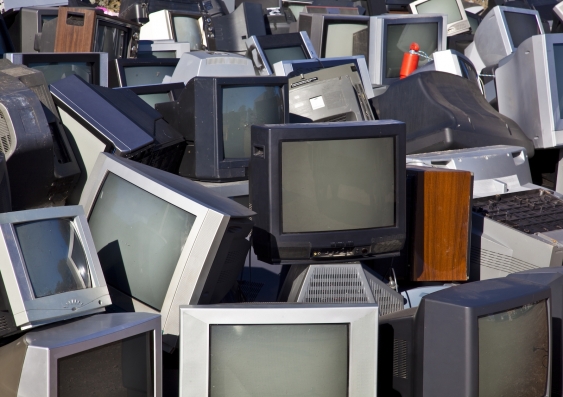5G: the true cost will be measured in e-waste
The 5G revolution could trigger an e-waste avalanche, but there are ways we can stem the flow, UNSW industrial design expert says.
The 5G revolution could trigger an e-waste avalanche, but there are ways we can stem the flow, UNSW industrial design expert says.

Ben Knight
UNSW Media & Content
+61 2 9385 8107
b.knight@unsw.edu.au
5G, the successor to the 4G network currently servicing your mobile phone, is more than just the next generation of phone network technology. In increasing download speeds dramatically, it will also enable new connected technologies. But it could also usher in an unprecedented wave of electronic waste we’re not prepared for.
“The exponential growth we’re going to see in electronic waste, especially around obsolescence … [given] the technology curve for these 5G connected devices is so steep at the moment, is a concern,” says UNSW Built Environment’s Dr Miles Park.
“It is already difficult enough when a new product is launched on the market every 12 months, and it’s just driving obsolescence of the previous generation of product because there is so much innovation and redundancy happening in this field.”
The Senior Lecturer in industrial design says a concern with 5G is the Internet of Things (IoT), which will allow manufacturers to turn benign products into networked objects at dramatic scale for many industry sectors and the home.
“We’ve seen this happen gradually over the last 20 years, where things which were typically analogue, or simple products like a toothbrush, are now electronic devices with batteries and motors in them,” he says.
“With this new wave of low cost and ubiquitous computing power being embedded within a whole lot of objects ... it is now possible to place a microchip and a battery and antenna into almost [everything].”Along with the security concerns, Dr Park says IoT will have enormous implications for product obsolescence and the end-of-life management of e-waste. He says the amount of e-waste produced is already alarming and warns 5G could make it even more unmanageable.

A spike in e-waste caused by 5G could be similar to the phase-out of analogue TVs. Photo: Shutterstock.
“With the rollout of 5G, perhaps that’s going to trigger a big blip for us in terms of forcing obsolescence in many technological sectors,” he says. “I suspect it will be a bit like what we saw just over a decade ago with the phase-out of analogue TV to digital transmissions – that caused a huge spike in the amount of obsolescence for audio-visual products notably televisions and VCR’s.”
He says there is already evidence of many IoT projects are falling into disrepair, once project funding expires and IoT management teams disperse. Moreover, fault finding and repairs to such systems can be complex, unviable and costly.
“IoT system failures can occur with something as simple as a forgotten password, a flat battery or non-renewed network subscription,” he says.
“Replace rather than repair and rapid innovations with 5G technologies will also shorten the lifespan of many network devices.
“Unfortunately, many 5G IoT technologies will inevitably fall victim to product obsolescence.”
Dr Park is researching methods on how to slow product obsolescence and e-waste by designing for upgradability and repairability. He says there are proven design and engineering strategies that could be implemented more often to help extend a product’s life.
“For example, you might offer obvious non-tool entry points for opening a product and replacing components, or you might design a product to be modular,” he says. “[And] if the provision of spare parts, repair services and the availability of information about repairability – if it is competitive – it will become economically viable for people to seek out repairs.”
'We should focus more on the notion of a circular economy when products reach the end of life, they could be refurbished or repaired, or the material can be recovered for remanufacturing.'
However, such strategies will only be suitable for certain products and circumstances. For embedded networked IoT devices, new strategies will need to be developed and implemented to slow product obsolescence.
Dr Park says there some things we should be doing already to offset the incoming wave of e-waste, including establishing a regulatory framework and supporting new business opportunities to manage the recovery and processing of IoT e-waste.
“We should focus more on the notion of a circular economy when products reach the end of life, they could be refurbished or repaired, or the material can be recovered for remanufacturing,” he says.
“Batteries, are increasingly present in many products, this will increase significantly in coming years, not only in interconnected IoT devices but in many other related IoT sectors such as electric vehicles and our homes,” he says.
“Currently battery recovery and recycling is inadequate with 97% of end-of-life batteries disposed of inappropriately with most still going to landfill – it is an obvious starting point.”